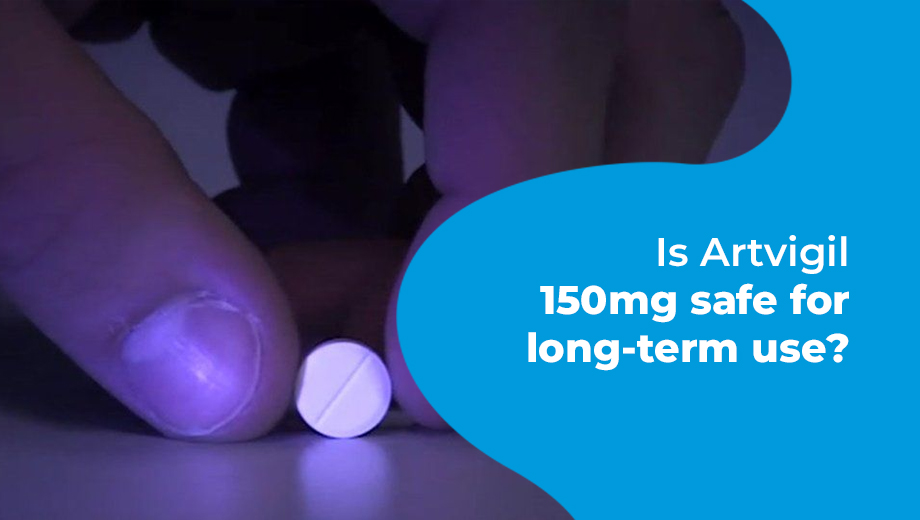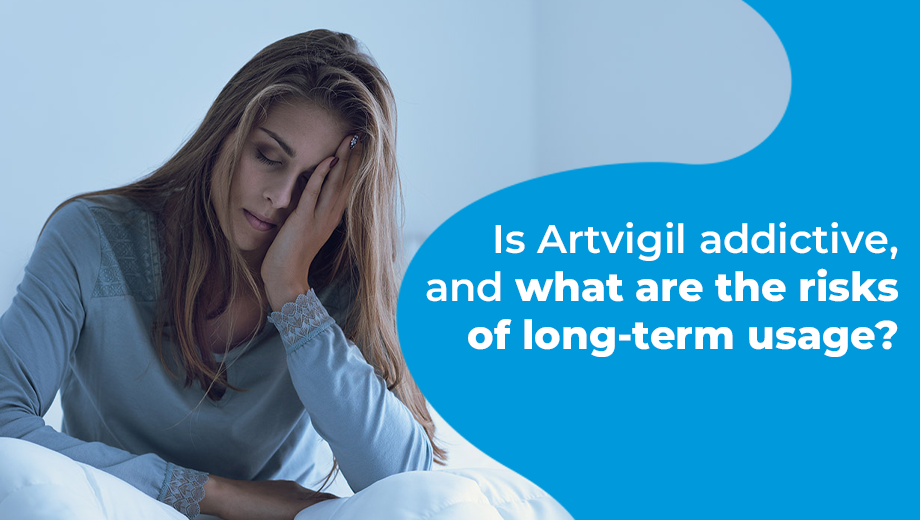Many sleep disorders, including narcolepsy, OSA, and shift work sleep disorder, are treated with Artvigil 150mg, which contains Armodafinil. Staying awake and alert is made easier with its wakefulness-promoting properties. Even though Artvigil helps with these issues temporarily, many wonder if it’s safe to use it for a long time.
Artvigil has the potential to affect people’s health over lengthy periods, and its rising usage makes it all the more important to investigate this. Armodafinil appears to have few side effects when used for lengthy periods, according to the available research. There are potential side effects, tolerance, and dependence that can develop, just as with any medicine. Healthcare providers and patients alike must weigh the benefits and hazards of this treatment carefully before deciding to use it over the long term. In this study, we will look at the research that has been done on the topic of the long-term safety of Artvigil.
Potential Benefits of Artvigil 150mg
Artvigil 150mg is one of the treatments for severe sleepiness associated with conditions such as narcolepsy, obstructive sleep apnea, and shift work sleep problems. The following are some potential benefits:
Increased Wakefulness
As a wakefulness-promoting drug, Artvigil keeps people attentive and awake during the hours of waking consciousness. Those who suffer from excessive daytime sleepiness may find this especially helpful.
Higher Cognitive Function
When using Artvigil, users frequently report higher cognitive function. This can include increased mental clarity, memory, focus, and concentration. It could be quite helpful for jobs that require mental or prolonged focus.
Increased Productivity
Because Artvigil 150mg promotes wakefulness and improves cognition, it may raise output levels. Users could discover they can complete more jobs more quickly and successfully.
Mood Enhancement
Artvigil has been shown to improve mood in some individuals. Though not the main reason it is recommended, it may aid with depression or low mood symptoms.
Reduced Fatigue
By lowering symptoms of sleepiness and exhaustion, Artvigil enables people to stay active and involved all day long. Particularly helpful might be this for those with hectic job schedules or obligations.
Shift Work Adaptation
Adapting to a non-traditional work schedule, such as night shifts, Artvigil can help with sleep-wake cycles, alertness during working hours, and encouraging restful sleep during off-hours.
Possible Side Effects and Safety Concerns
Some possible side effects and safety issues with Artvigil 150mg are listed below:
Side effects:
Headache
It can range from mild to severe, as many Artvigil users have mentioned.
Nausea and Upset Stomach
Individuals may feel sick, puke, or have stomach problems after taking Artvigil 150mg.
Anxiety
Artvigil is supposed to help people stay awake, but some users have trouble sleeping after taking it.
Nervousness
Some people have said they felt anxious, nervous, or jittery.
Dry Mouth
Artvigil may make the mouth feel dry, which can be annoying.
Dizziness
Some individuals may feel vertigo or lightheaded, especially when they stand up quickly.
Safety Concerns
Drug Interactions
Antidepressants, antifungals, and antibiotics may interact with Artvigil. Consult your healthcare provider before mixing Artvigil with other medicines.
Dependency and Withdrawal
Abuse or abrupt discontinuation of Artvigil 150mg, like other wakefulness-promoting drugs, can cause dependency and withdrawal symptoms.
Cardiovascular Risks
Artvigil might raise heart rate and blood pressure; thus, anyone with heart issues should use it cautiously.
Psychiatric Effects
Rarely, Artvigil users have reported hallucinations, mania, or suicidal ideation. Urgent medical attention is needed for severe mood changes.
Allergic reactions
Artvigil can cause a rash, itching, swelling, and difficulty breathing in rare cases. Immediately seek medical attention for allergic reactions.
Long-Term Use of Artvigil 150mg
Patients with narcolepsy or sleep apnea should carefully weigh the benefits and hazards of using Artvigil 150mg over the long term. Addiction, tolerance, and withdrawal symptoms upon stopping use may occur with long-term use. The risk of adverse effects on the central nervous system, liver, and heart needs ongoing monitoring.
Although Artvigil does increase alertness, how it affects cognitive performance and sleep quality in the long run is still unknown. To balance benefits and risks and guarantee safe use over long periods, it is essential that healthcare professionals continuously review the situation.
Conclusion
In conclusion, while Artvigil may improve wakefulness, its long-term safety must be carefully considered. While it may help those with sleep difficulties, worries about tolerance, dependence, and negative effects on cardiovascular health, liver function, and mental well-being demand close monitoring. The medication’s short-term benefits must be balanced against the concerns, which include uncertainty about its impact on cognitive function and sleep quality. To ensure the long-term use of Artvigil 150mg is safe and effective, a balanced approach that is based on regular assessments and consultation with healthcare professionals is necessary.




